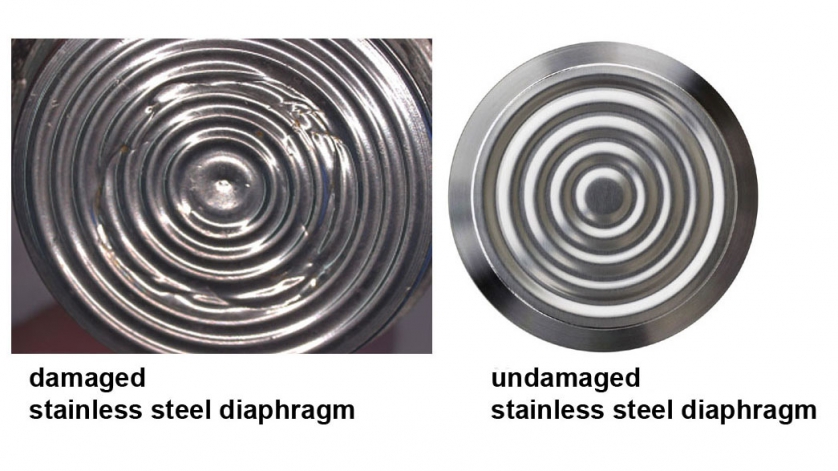
If the specific pressure sensor design of the submersible pressure transmitter or level probe is selected to measure the filling levels, this often means that the probe is used under environmental requirements which would cause failure of common level sensors.
The most adverse conditions such as soiled media, abrasive ingredients and sludge when used in wastewater treatment plants, brackish and wastewater tanks or even digester towers, impose special requirements on the design of a submersible pressure transmitter. One of the main requirements on a submersible pressure transmitter is to obtain the lowest possible susceptibility to contamination or build-up of the pressure sensor by optimizing its design. This is why the typical design of a pressure transmitter with narrow pressure ports is not used within level probes because it would tend to clog in such applications.
The design of the submersible pressure transmitter and its pressurised sensor diaphragm is optimised in order to achieve very low susceptibility to contamination. However, continuous operation in soiled media may lead to sticking of dirt particles on the stainless steel diaphragm. To obtain the highest accuracy and fastest response times in case of level change, the thickness of this stainless steel diaphragm is already minimised ex factory to just a few microns. Therefore, cleaning of the diaphragm must be carried out with caution. Always avoid using sharp or edged tools. It is also strongly advised not to use the commonly used screwdrivers or pens.
If cleaning of the sensor diaphragm is necessary, then rinse it using a weak water jet or clean it carefully using compressed air. Damage of the diaphragm due to denting or notching, even if it seems to be purely superficial, leads to significant losses in the accuracy of level measurement. Deformation of the diaphragm often shifts the zero point of the pressure measurement in the internal electronic measurement system and additionally distorts the output signal linearisation which has been adjusted ex works to the undamaged diaphragm. Thus, the submersible pressure transmitter with damaged diaphragm generates falsified measurement of the current filling level and, therefore, cannot be considered a reliable measuring instrument any more. Thus, complete replacement of the damaged instrument is absolutely necessary.
Please find further information on this topic on our information platform “Hydrostatic level measurement” 

